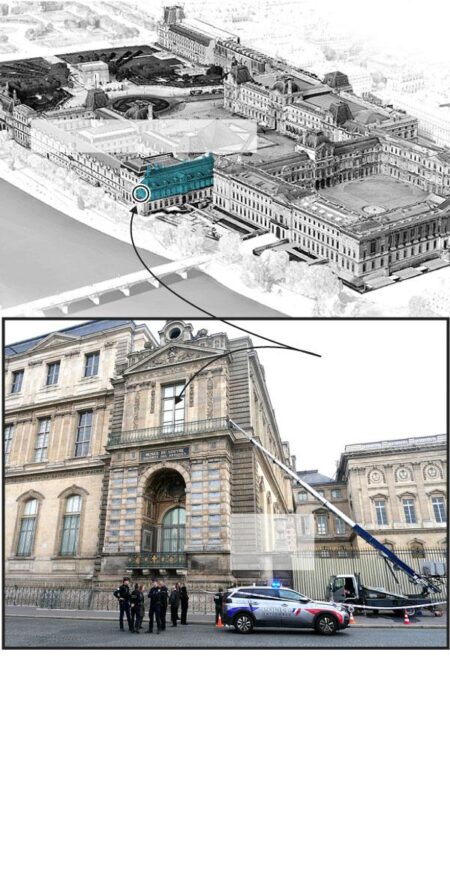Altice France, a leading telecommunications and media company, has officially filed for Chapter 15 bankruptcy protection in a U.S. court, marking a significant development in its ongoing financial restructuring efforts. The move, reported by USA Herald, signals the company’s strategic step to safeguard its interests amid mounting fiscal pressures and complex cross-border insolvency proceedings. This filing allows Altice France to seek recognition and protection under U.S. bankruptcy laws while it navigates challenges in its home jurisdiction, highlighting the increasingly global nature of corporate financial distress.
Altice France Initiates Chapter 15 Filing in US Court Amid Financial Restructuring
Altice France has officially filed for Chapter 15 protection in a United States court as part of an ongoing effort to restructure its complex financial obligations. This strategic legal move allows the French telecommunications giant to safeguard its U.S.-based assets while coordinating debt restructuring processes across international jurisdictions. The Chapter 15 filing is designed to facilitate cooperation between U.S. courts and foreign insolvency proceedings, enabling the company to manage creditor claims efficiently without unwinding its primary operations.
Key elements of Altice France’s financial restructuring include:
- Streamlining operational efficiency by renegotiating debt terms with lenders
- Preserving cross-border asset management through coordinated legal frameworks
- Minimizing disruptions to service delivery amid financial realignment efforts
| Metric | Before Filing | Post Filing Expectations |
|---|---|---|
| Debt Restructuring Timeline | 12-18 months | Accelerated to 9-12 months |
| Creditor Negotiation Status | Initial talks | Formalized agreements |
| Asset Protection | Limited U.S. oversight | Enhanced cross-border cooperation |
Understanding the Implications of Chapter 15 for International Creditors and Stakeholders
The Chapter 15 filing by Altice France holds significant ramifications for international creditors and stakeholders involved in cross-border insolvency proceedings. This legal mechanism is designed to facilitate cooperation between US and foreign courts, ensuring the protection of creditors’ rights while streamlining the recognition of foreign bankruptcy cases in the United States. For creditors, understanding the procedural nuances of Chapter 15 is crucial, as it can determine the priority of claims and influence recovery timelines. International stakeholders should closely monitor the recognition process and the automatic stay provisions, which can temporarily halt creditor actions within US jurisdiction, offering a structured environment for dispute resolution.
Moreover, Chapter 15 encourages transparency and coordination across jurisdictions, mitigating risks of fragmented legal battles. Key considerations for affected parties include:
- Recognition of foreign proceedings: Ensuring the US court acknowledges the foreign bankruptcy can protect assets and stabilize the litigation landscape.
- Access to US-based assets: Chapter 15 enables centralized management, allowing trustees to pursue or defend claims in US courts efficiently.
- Impact on creditor hierarchies: Cross-border insolvencies may alter repayment priorities, emphasizing the need for stakeholders to reassess their positions promptly.
| Aspect | Implication | Stakeholder Focus |
|---|---|---|
| Automatic Stay | Freeze of creditor actions in US | Creditors & Debtors |
| Recognition | US court’s formal acknowledgment | Legal Representatives |
| Asset Management | Centralized control of US assets | Trustees & Creditors |
| Claim Prioritization | Potential reshuffling of debts | Creditors |
Strategic Recommendations for Investors Navigating Altice France’s Cross-Border Insolvency Proceedings
Investors should prioritize a comprehensive understanding of the legal intricacies associated with Altice France’s Chapter 15 filing. As this cross-border insolvency proceeding unfolds, collaborating closely with legal and financial advisors who specialize in international restructuring can provide critical insights. Maintaining vigilance around court updates and creditor committee actions will enable investors to adapt swiftly to changes in the procedural landscape, safeguarding their assets and interests amid uncertain outcomes.
Key strategic considerations include:
- Monitoring the cross-jurisdictional recognition process for any potential impact on asset recoveries.
- Evaluating risks related to currency fluctuations and regulatory differences between French and U.S. insolvency frameworks.
- Assessing Altice’s asset portfolio segmentation to identify priority claims and possible recovery prospects.
- Preparing for potential restructuring scenarios that may alter equity valuations or creditor hierarchies.
| Aspect | Investor Focus | Potential Impact |
|---|---|---|
| Recognition of Foreign Proceedings | Legal validation and enforcement | Access to U.S. protections and asset management |
| Jurisdictional Overlap | Coordination between French and U.S. courts | Risk of conflicting rulings or delays |
| Currency & Regulatory Risks | Hedging and compliance strategies | Volatility in asset value and timing |
Key Takeaways
As Altice France navigates the complexities of its Chapter 15 filing in the US court, industry observers will be closely watching the implications for the company’s international operations and creditor relations. This procedural step highlights the growing challenges faced by multinational media conglomerates in an evolving economic landscape. Further developments in the case are expected to provide greater clarity on Altice France’s strategic direction amid ongoing financial restructuring efforts. USA Herald will continue to monitor the situation and provide updates as more information becomes available.




